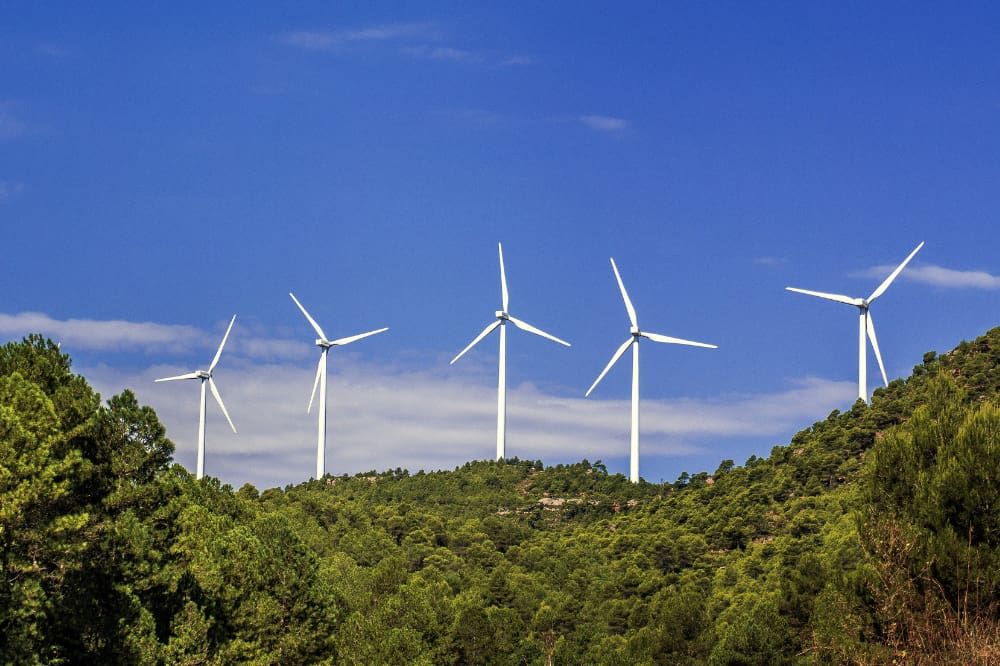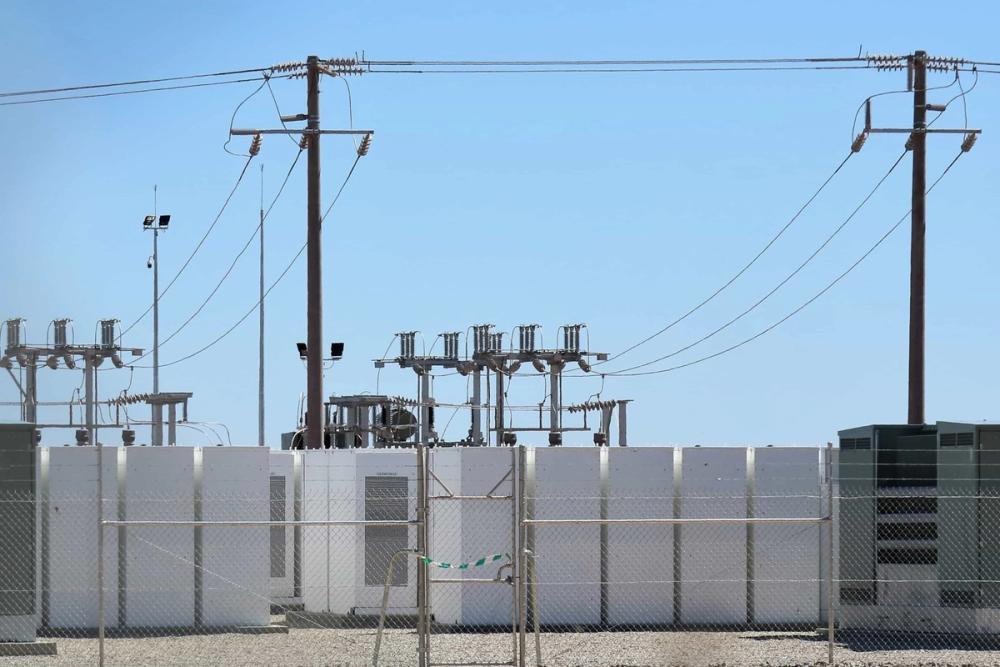Are We Developing The Right Electricity Storage System Projects To Help Deliver Net Zero?

ABOUT THE AUTHOR
Nick Provost has written this article in his role of Commercial Manager at Balance Power Projects Limited, a leading independent renewable energy developer. Nick brings a unique blend of understanding how technologies work through his engineering background and chartership with the Institution of Mechanical Engineers and how these technologies deliver economic value and benefits and has a strong track record in developing bespoke techno-commercial energy models.
FOREWORD
Back in April 2022, the UK government launched an Energy Security Strategy to great fanfare trying to outline how the UK was going to deliver “Secure, clean and affordable British energy for the long term” with clear focusses on ‘net zero compliant generation assets’ such as nuclear, solar PV and both off-shore and on-shore wind.
As a response to this, Balance Power compiled a blog and a further more detailed report outlining findings from its own analysis on whether the ambitions laid out in the Energy Security Strategy were comprehensive enough to deliver a net zero grid. The core tenet of our findings was that whilst the goals for the required quantum of generation assets were in the right ballpark, the likely misalignment between the generation from these assets and grid demand across multiple time periods would require electricity storage projects multiple orders of magnitude greater than what was considered necessary or being planned for.
12 months later, we have revisited the topic but with a different hypothesis looking at whether the electricity storage projects that renewable energy project developers, such as Balance Power, are currently developing align technically with the aspiration for a net zero grid. Currently the best projects that are financeable are 2h projects, “2” referring to the duration of the electricity storage systems but this intuitively feels too short to make a meaningful impact with respect to running a net zero grid.
Based on the current maximum UK power demand (≈47.2GW[2]) and the existing electricity storage pipeline (≈118GW[3]), it could be argued that enough electricity storage power [GW] has been ‘Accepted to Connect’ or ‘Connected’ but the actual electricity storage capacity [GWh] needed is not being fulfilled due to the low durations that developers will currently consider due to commercial considerations.
This analysis looks at whether there is a more optimal way of connecting the proposed electricity storage systems; ensuring that NGESO has enough flexibility to respond to changing grid conditions but also minimising cost and time to connect all the required electricity storage capacity. The hypotheses that this report look at is whether i) developers are being encouraged to develop and deliver electricity storage projects that meet NGESO’s technical needs and ii) if not, what is the optimum configuration for an electricity storage project?
EXECUTIVE SUMMARY
Four distinct conclusions can be derived from this report which are covered below. However, a clear, consistent theme is present across all the points in that it is vital that technical needs of NGESO to run a net zero compliant Grid align with the government commercial incentives and available business models.
1. DEVELOPERS NEED ENCOURAGEMENT TO MOVE ON FROM 2 HOUR ELECTRICITY STORAGE SYSTEMS
Continuing, ongoing development of 2h electricity storage systems will likely produce a sub-optimal outcome due to a larger than necessary volume of grid connections being required. This will likely add extra costs and time delays to connect individual electricity storage projects to the grid with the knock-on impact of making electricity more expensive for consumers in the interim.
NGESO, government and other stakeholders should encourage developers to develop longer duration electricity storage systems as their preferred projects. The exact value of the optimal duration is a function of multiple constants, variables, and desired outputs but we would anticipate that across multiple realistic, future scenarios that 8h duration projects would provide the best balance between having i) sufficient electricity storage power [GW] to deliver the operational flexibility required to prevent an excessive volume of grid balancing actions and ii) minimising the cost and time of connecting the required electricity storage capacity [GWh] to the grid.
This shift will not take place overnight and there is a ‘chicken-and-egg’ scenario. Even if we take the stated 8h duration as the final, definitive conclusion; developers are unlikely to gravitate towards developing these schemes unless it is clear to them that these electricity storage projects deliver the best commercial returns for themselves, asset owners and investors for each valuable grid connection offer that they have secured.
Currently key components are missing; the key one being a revenue forecast to determine how much revenue would be available for an 8h electricity storage project. This would enable reverse calculation to calibrate any specific government support needed to divert developer attention these longer duration electricity storage projects.
2. IT IS THE MWH, NOT THE MW THAT IS NOW MORE IMPORTANT
This analysis has highlighted that the electricity storage marketplace is too orientated on the power [GW] of electricity storage projects and ignores the growing importance of the capacity [GWh] of electricity storage projects. The power of electricity storage projects was more important as this was lacking when the industry was in its infancy back in 2019 but with effective marketplace saturation with ≈118GW of connections, the marketplace should consider orientating to capacity.
This would mean that all industry stakeholders should reconsider their pipelines in MWh/GWh and link all associated costs and revenues to this. If electricity storage pipelines were in capacity, it will be easier for NGESO and other stakeholders to demonstrate where the grid is versus long-term capacity [GWh] targets and help drive targeted development.
3. CAN THE GRID BE SMARTER IN GETTING WHAT IT NEEDS?
Based on the 47.2GW maximum power demand in 2022 and 118GW connection pipeline, National Grid are likely to have more than enough electricity storage system power [GW] to power the entire UK-grid if all these projects were grid connected. With the inevitable competition for grid connections and pressure to connect projects to the grid more quickly; National Grid could be offering developers the opportunity to increase the duration of their proposed electricity storage projects, thereby decreasing the duty [GW] for a fixed capacity [GWh], in return for a quicker connection date.
By doing this, National Grid may be able to prevent the requirement for expensive upgrades (eg extra transformers at connection points to allow additional power generation or storage connections etc) whilst still receiving the capacity they need. Conversely any saved duty [GW] may be able to be redeployed to other connection generation types, such as solar PV and wind to prevent these projects competing more directly with electricity storage projects.
Additional commercial work needs to be carried out to determine whether any cost savings that could be realised through fewer grid reinforcements required with a longer duration electricity storage philosophy can exceed any likely additional government support required to encourage developers and investors to divert their resources to the longer duration electricity storage projects that the grid needs.
Any commercial optimisation that can be delivered on this point will ultimately benefit consumers through reducing both the time taken to connect all the required electricity storage projects and ultimately their cost-burden through lower network costs in their electricity bills.
4. WE STILL NEED DISPATCHABLE GENERATION, ELECTRICITY STORAGE SYSTEMS CAN NOT DISPLACE IT
Whilst not explicitly investigated as part of this work; a key observation that has been made is that the likely requirement for dispatchable generation (i.e. generation, often fossil-fuel fired, that can be called upon on-demand to balance generation and demand) is the same independent of the extent of electricity storage capacity [GWh] of any configuration duty [GW] and duration [h] to provide that capacity.
This has been picked up by the modelling due to the 2022 calendar year having two periods of demand being more than what could be delivered by the generation outlined in the Energy Security Strategy over multiple weeks. This results in any electricity storage being discharged quickly with the net zero compliant generation unable to provide enough power to allow the electricity storage to recharge. It is therefore likely that if NGESO, the government and other stakeholders want to operate a net zero compliant grid; hydrogen-fuelled dispatchable generation, measured in the 10s of GW, will need to be developed and installed. With two of these events occurring in 2022, these can’t be simply treated as freak events and future grid design needs to consider this issue.
To demolish any existing fossil-fuelled generation, on the pretext of having additional electricity storage assets connected to the grid alone, will carry very significant security of supply risks. It is clear that the current dispatchable, fossil-fuel fired generation assets should only be demolished once a net zero compliant equivalent, such a hydrogen-fired generation, is available to take its place on a like-for-like basis.
This is not to diminish any advantages realised through decommissioning existing fossil-fuel standby generation, such as releasing connection duty [GW] for other renewable technologies, it is to point out that electricity storage shouldn’t be treated as a direct replacement technology for existing dispatchable power generation and should be seen as a complementary technology instead.
WHAT TO SEE MORE DETAIL?
If you want to see more detail behind the points raised in this article. Please click here to download the full report.
FOOTNOTES
[2] 2022 data collated from https://www.bmreports.com/bmrs/?q=demand/rollingsystemdemand
[3] Collated from ESS projects labelled as ‘Connected’ or ‘Accepted to Connect’ within the NGESO TEC Register and DNO ECRs in April 2023



